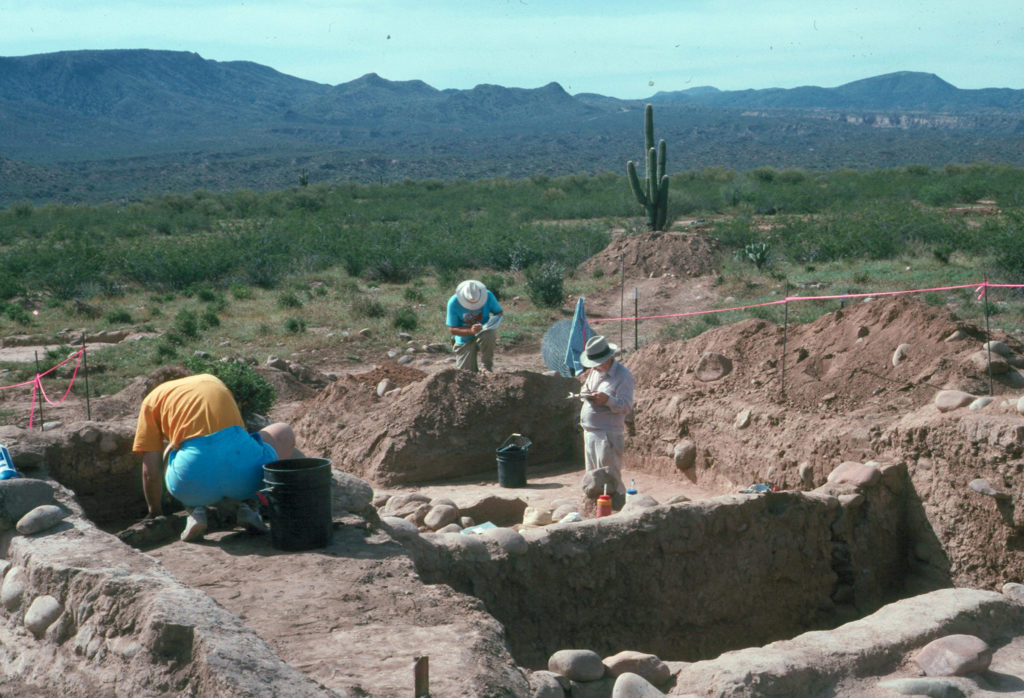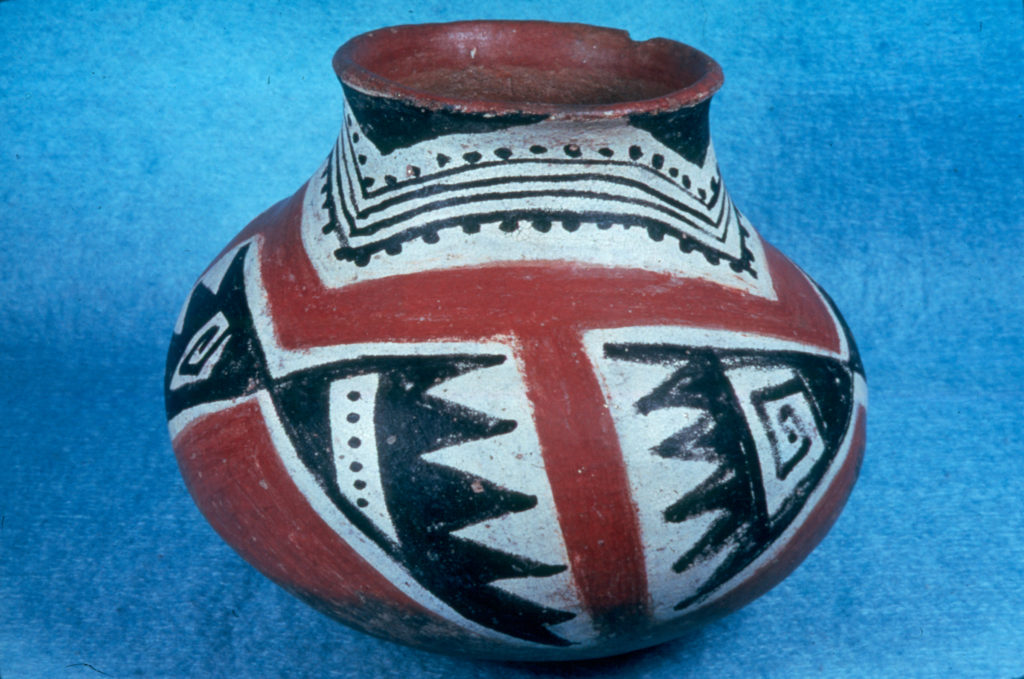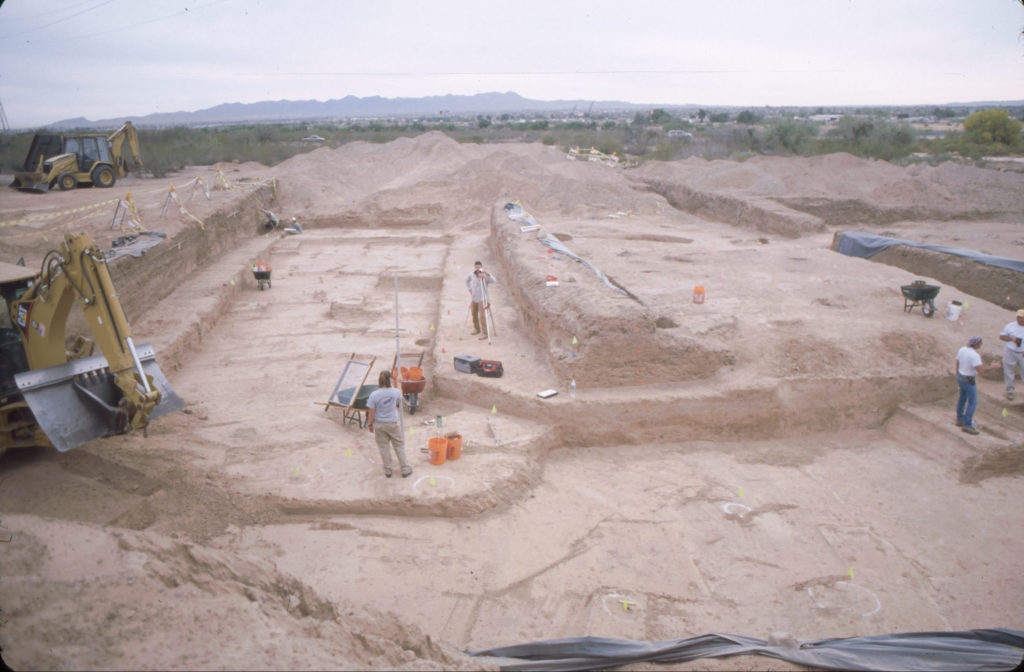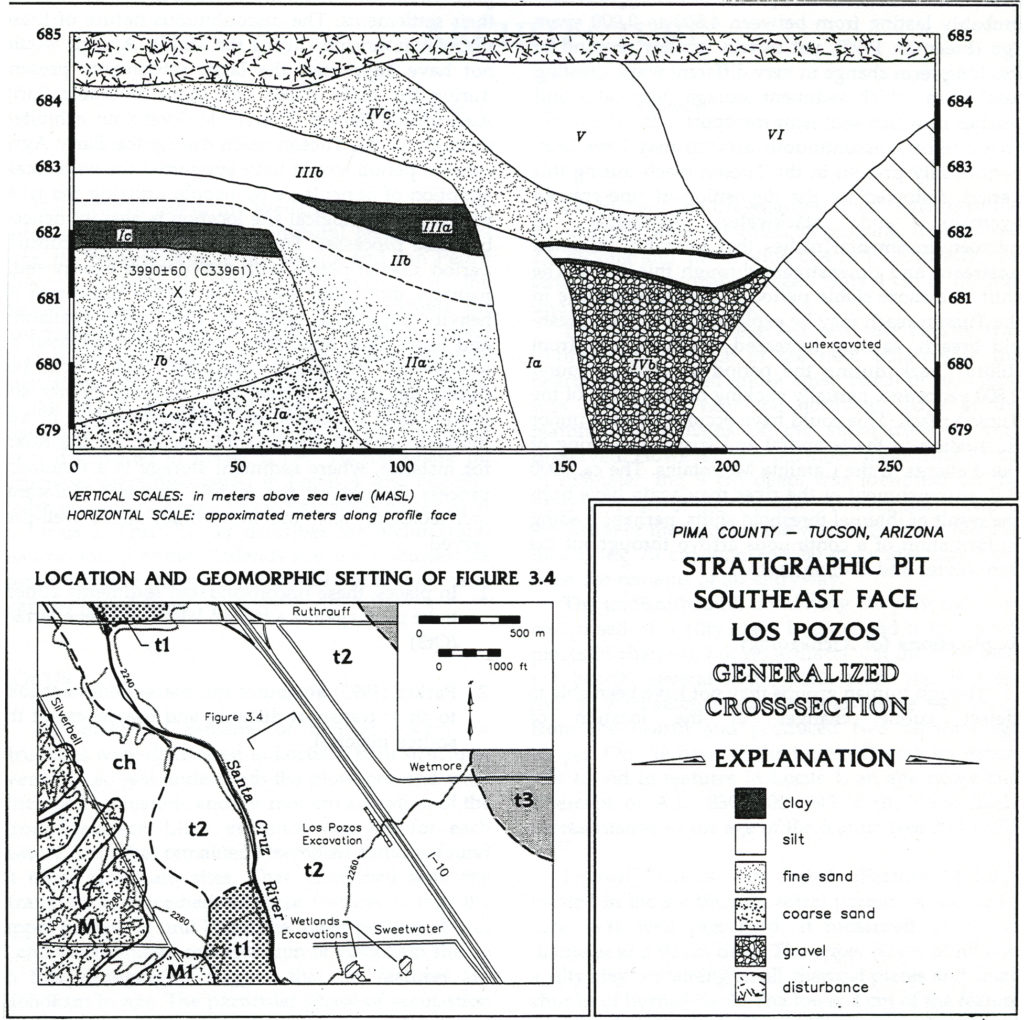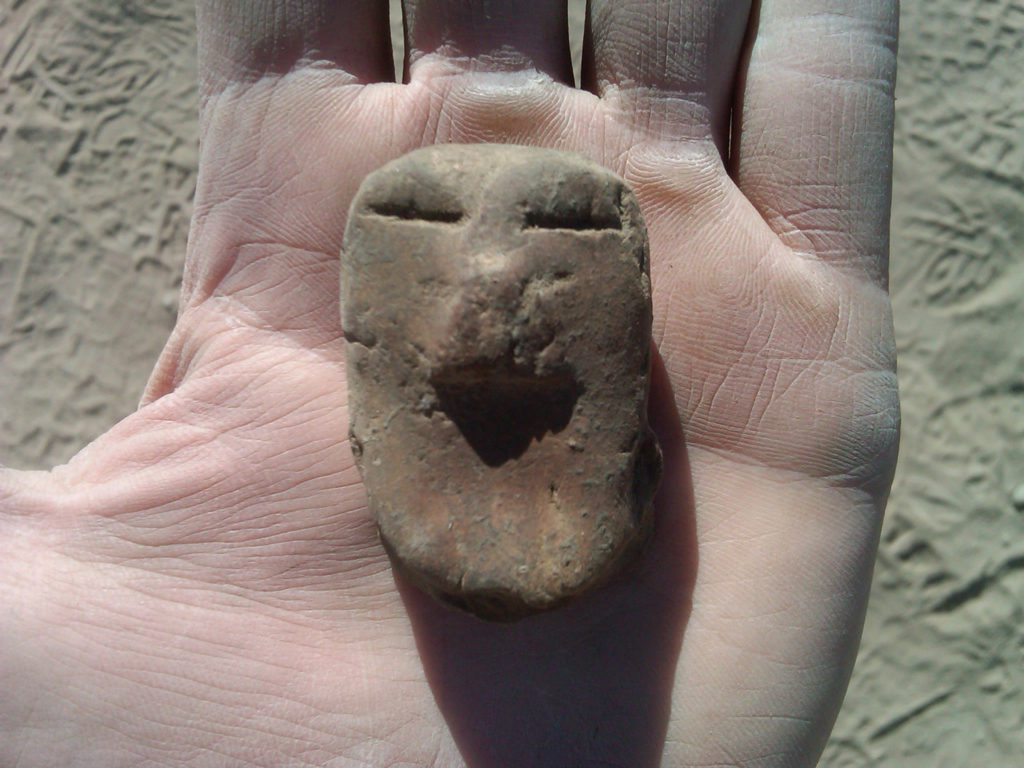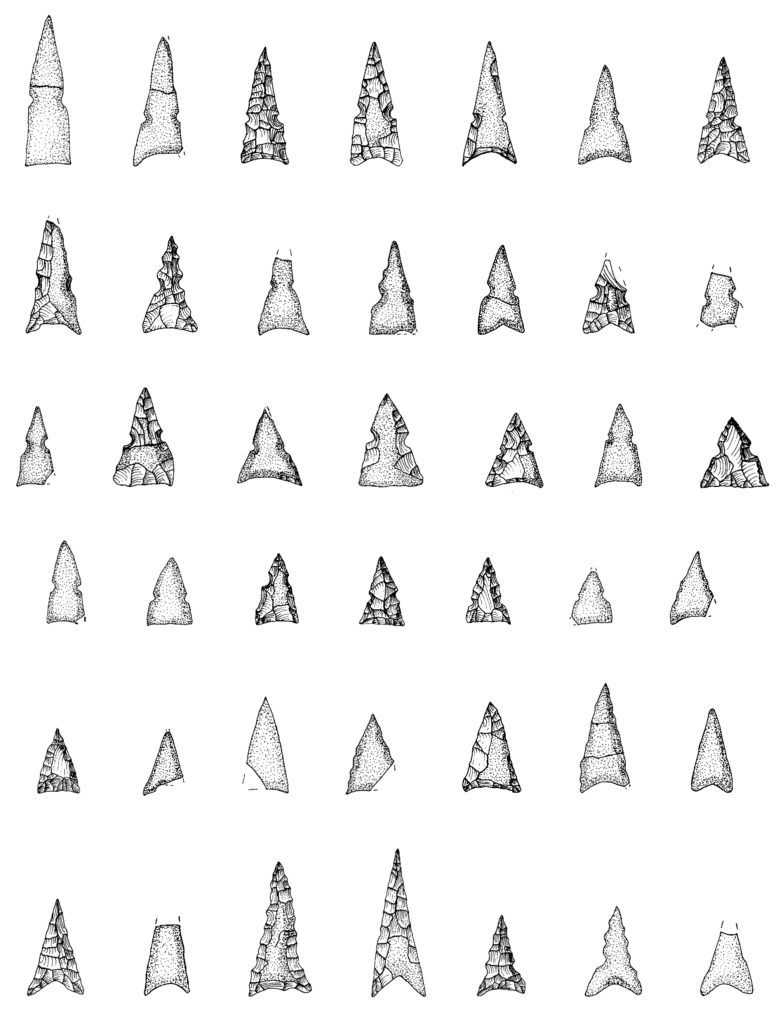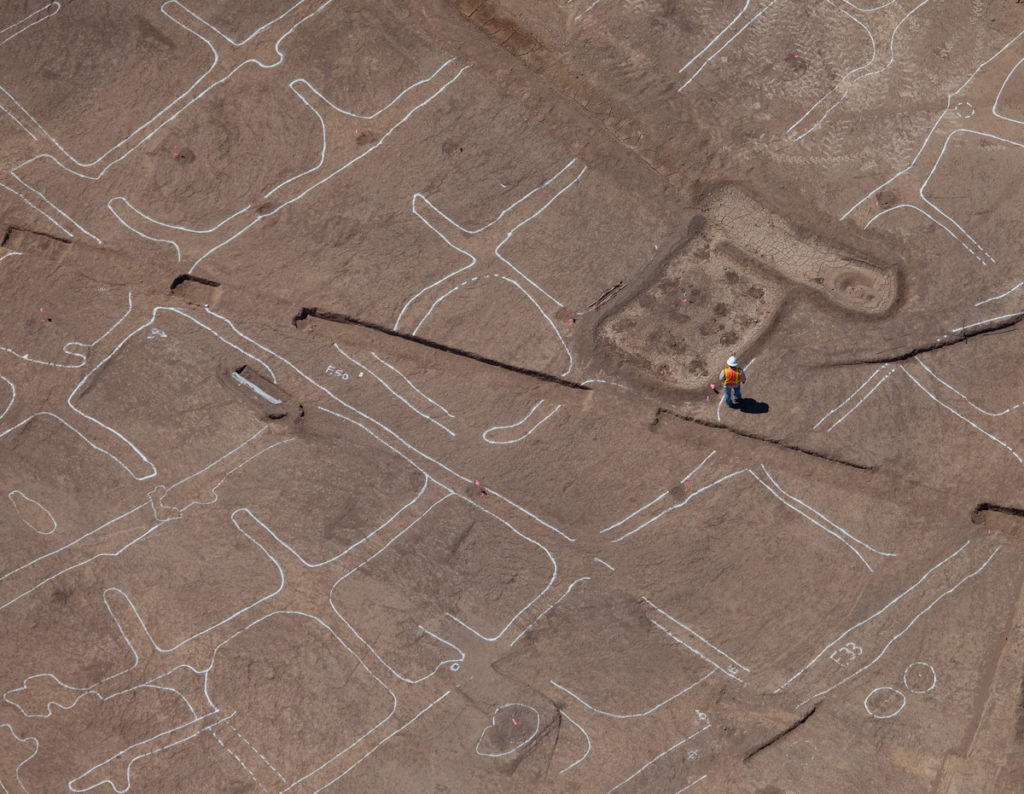
Desert Dissertations: CRM Archaeology and Advanced Academics
Desert Archaeology president Sarah Herr discusses Desert staff members who have earned graduate degrees on the foundations of CRM work.
When Desert Archaeology project director Jim Vint successfully defended his doctoral dissertation this week, he became the latest in a long line of Desert staff who have translated their work in CRM into academic success at the highest levels. The dissertations–these syntheses of tremendous quantities of data –have been reworked into monographs and journals and become the basis for the future scholarship of the authors, they advance inquiry by CRM and academics generally, and are starting points for subsequent research that test and expand this work.
Mark Elson’s work on the Rye Creek project led to his dissertation (1996, University of Arizona) examining the function of platform mounds in the Tonto Basin, which incorporated extensive ethnographic data from different regions of the world. The insights from these studies, applied to the Roosevelt phase Tonto Basin (A.D. 1250-1350), suggest a new settlement model for the region in which the mounds were built by competing socially complex groups to help manage irrigation systems and integrate people of different backgrounds. Mark regularly seeks ethnographic and cross-cultural information to interpret archaeological findings, seeking to include the interpretations of Hopi men and women on the results of field efforts in northern Arizona on the US 89-Wupatki project, and looking broadly at how people elsewhere have responded to volcanic disasters such occurred at Sunset Crater in the late eleventh century. This work continues, even in his retirement.
In his dissertation (1997, University of Arizona), Jeff Clark used the stylistic information embedded in low-visibility domestic material culture, such a utilitarian ceramics and the construction and arrangement of architectural walls to track immigration in the Tonto Basin during the A.D. 1100-1300 interval. He then turned to high-visibility material culture to evaluate economic and social relations between immigrant and indigenous groups as the Salado phenomenon spread across the region. Jeff led the Tonto Creek Archaeological Project for Desert. He now holds a position as a Preservation Archaeologist at Archaeology Southwest, where he continues to investigate both Salado and how to understand the impact of migration on late prehistoric communities in the southern Southwest through a series of National Science Foundation grants. The grants also support volunteer and field school efforts.
Helga Wöcherl’s dissertation (1997, University of Arizona) examined the role played by hunted animal resources in subsistence practices during the transition to agriculture in settlements along the Santa Cruz River in the Tucson Basin. This drew on multiple Desert Archaeology investigations occasioned by construction work on Interstate 10 and its frontage roads during the 1990s, including excavations Helga directed at Columbus Park and the site of El Taller and her work has continued to consider subsistence practices in the Early Agricultural period along the Santa Cruz floodplain.
Max (Andrea) Freeman was Desert’s resident geoarchaeologist before moving on to an academic career as an associate professor at the University of Calgary. Her dissertation (1997, University of Arizona) dealt with the hydroclimatological processes that cause channel changes on the Santa Cruz River, and how geomorphic and paleoenvironmental variables conditioned decision-making by the ancient people who lived along the river.
Beth Miksa conducted pioneering work in ceramic temper provenance studies (encapsulated by the sign she kept taped to a filing cabinet declaring her work area The Institute for the Thoroughly Serious Study of Sand). Her dissertation (1998 , University of Arizona) presented temper provenance modeling with guidelines for the assessment of geological resource availability. Desert’s petrographers continue to expand the sets of petrofacies characterization throughout the state of Arizona, providing an invaluable resource for ceramic temper identification and the attendant inferences about prehistoric pottery manufacture and exchange.
The core of Rebecca Dean’s dissertation (2003, University of Arizona) rests on faunal data from our excavations at Los Pozos and Las Capas. She compared these to a regional database spanning the Middle Archaic through Hohokam periods to evaluate how changes in diet breadth (reflected by prey animals) reflect the social and economic changes that accompanied the introduction and intensification of agriculture in the Tucson Basin. Rebecca is now a zooarchaeologist at the University of Minnesota, Morris.
Mike Lindeman’s dissertation (2006, Arizona State University) considers household-based specialized production in the Tucson Basin during the Hohokam Rincon phase (A.D. 1000-1100), with a focus on how the manufacture of socially valuable, symbolically powerful goods maintained social order and the ritual system. Mike has spent much of his career at Desert investigating the Hohokam village, from the individual household components to the structure of villages, and has led excavations of multiple sites that span the Hohokam preClassic (Valencia Vieja, Sunset Mesa, Paseo de las Iglesias, and La Villa) and allow him to explore ideas about origins and development of village structures in southern Arizona.
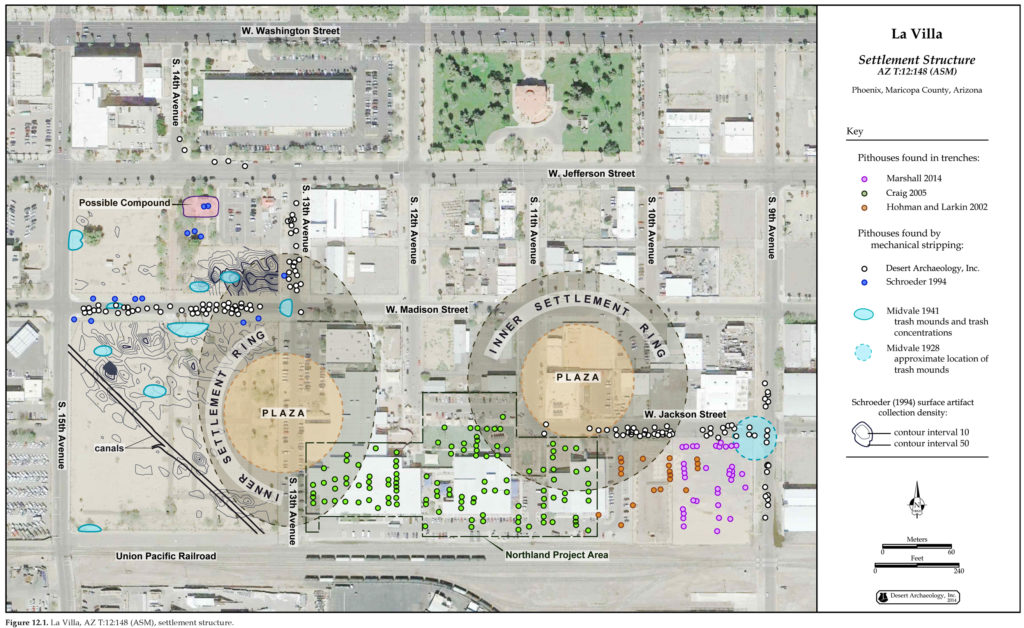
Village structure at the La Villa site in Phoenix, per Mike’s Hohokam settlement structure model (figure from DAI Technical Report 2014-07).
Leslie Aragon’s master’s thesis work (2013, University of Arizona) borrowed an ontological approach from the field of philosophy to explore the life histories of figurines, and applied the resulting patterns to her analysis of anthropomorphic figurines recovered from La Villa. Leslie is currently a Preservation Fellow at Archaeology Southwest, and is working on her doctoral degree at the U of A.
Another Desert master’s thesis was just completed by Stacy Ryan (2017, University of Arizona), who examined the relationships among cultural affiliation, obsidian sources, projectile point function, and Classic period point design in the Tucson Basin and San Pedro Valley. This research incorporated the projectile point analysis she conducted for Desert’s Yuma Wash investigations.
Jim Vint’s dissertation (2017, University of Arizona) focuses on early agricultural practices at the settlement of Las Capas, located on the Santa Cruz River in the Tucson Basin, and includes refined radiocarbon dating of early maize in the US Southwest. Jim found that agriculture was adopted and intensified in the absence of several of the causal factors seen elsewhere in the world. The bulk of the data for his dissertation was recovered through Desert’s excavations of Las Capas, which Jim led as project director.
This scale of work is made possible by the fact that two of the Southwest’s strongest anthropology and archaeology graduate programs, at University of Arizona and Arizona State University, are located within 100 miles of our offices. Here in southern Arizona, the past and future of CRM firms, the university, and museums are intertwined in ways that have made Tucson and Phoenix vital places for advancing our understanding of the past. CRM companies provide jobs and experience for students, our employees provide lectures on new research to college classrooms and serve as advisors on committees, and the students and their professors stimulate us with their insights and focus. These theses and dissertations showcase the contributions that CRM has made and epitomize all that is best about our archaeological community.


